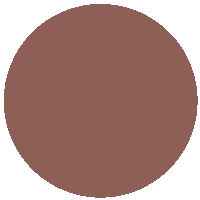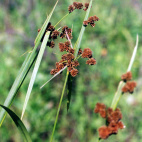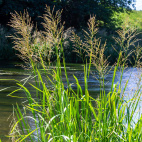Color
Availability
USDA Zone
Region
Type
Duration
Season
Germination
Soil
Sunlight
Height
Narrow Your Search
Color
Availability
USDA Zone
Region
Type
Duration
Season
Germination
Soil
Sunlight
Height
US Native Grass Seeds
The species on this page are not all technically classified as grasses, but the average gardener would probably call them "grass". Here you will find a variety of seeds of native grasses, sedges, reeds, and rushes. You might not think of grass as being as beautiful as flowers, but some of these wild grasses really are beautiful in their own way. Many of the native prairie grasses turn color in autumn, and the rusty bronze color of the stems adds a real fall aura to the planting. Winter birds benefit from the wild grass seeds, and small animals use the thick undergrowth for cover. The biomass of the grass is also the primary source for fuel when a prairie planting undergoes a planned burn.
-
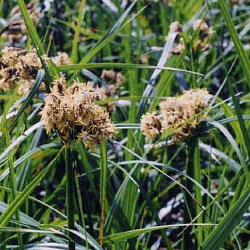 Dark Green Bulrush Seeds
Scirpus atrovirens
Because of it's aquatic nature, this native rush needs a constant supply of water. It is a common sight in wetlands, marshes, lakes, and ponds. This hardy perennial grows best in the cool seasons of spring and fall.Quick View$2.98 Pkt - $11.88 / Oz
Dark Green Bulrush Seeds
Scirpus atrovirens
Because of it's aquatic nature, this native rush needs a constant supply of water. It is a common sight in wetlands, marshes, lakes, and ponds. This hardy perennial grows best in the cool seasons of spring and fall.Quick View$2.98 Pkt - $11.88 / Oz -
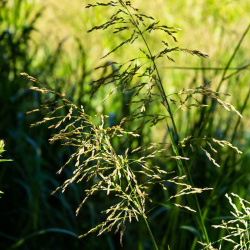 Reed Manna Grass Seeds
Glyceria grandis
An essential member of the wetland community, this native grass flourishes in marshes or along streams. It is a cool-season grass and is easy to grow, so it is a popular choice if a taller grass is desired in a wet area.Quick Viewx
Reed Manna Grass Seeds
Glyceria grandis
An essential member of the wetland community, this native grass flourishes in marshes or along streams. It is a cool-season grass and is easy to grow, so it is a popular choice if a taller grass is desired in a wet area.Quick ViewxReed Manna Grass Seeds
Glyceria grandis
An essential member of the wetland community, this native grass flourishes in marshes or along streams. It is a cool-season grass and is easy to grow, so it is a popular choice if a taller grass is desired in a wet area.
$3.25 Pkt - $21.00 / Oz
The species on this page are not all technically classified as grasses, but the average gardener would probably call them "grass". Here you will find a variety of seeds of native grasses, sedges, reeds, and rushes. You might not think of grass as being as beautiful as flowers, but some of these wild grasses really are beautiful in their own way. Many of the native prairie grasses turn color in autumn, and the rusty bronze color of the stems adds a real fall aura to the planting. Winter birds benefit from the wild grass seeds, and small animals use the thick undergrowth for cover. The biomass of the grass is also the primary source for fuel when a prairie planting undergoes a planned burn.
